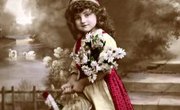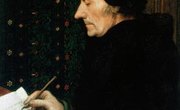T.S. Eliot’s “The Love Song of J. Alfred Prufrock” -- commonly referred to simply as “Prufrock” -- marked a monumental literary shift between 19th-century Romantic poetry, and 20th-century Modern poetry. Many of the poem’s most relevant characteristics indicate the ways in which Eliot was resisting the Romantic tradition. In considering how “Prufrock” is a representative example of literary modernism, it is necessary to consider the poetic aspects of literary Romanticism that Eliot was resisting.
"Make It New"
A theme of modernist writers, the concept of “making it new” called for poets like Eliot to abandon, if not challenge, various poetic stylings of the Romantic period. This can be seen in the free verse of “Prufrock,” as well as its use of stream of consciousness, a writing technique popularized by modernist writers such as James Joyce and Virginia Woolf. These techniques were designed to make the experience of reading “Prufrock” a much different experience than reading earlier, more structured poems such as Samuel Taylor Coleridge’s Romantic-era poem “Rime of the Ancient Mariner.”
Move Toward Universality
Another key feature of modernist poetry exemplified in “Prufrock” is its move from individual to universal experience. While Romantics such as John Keats or Percy Bysshe Shelley dwelled on their own experiences of beauty in the natural world, Eliot’s titular character’s musings are meant to be read as both personal and shared. J. Alfred Prufrock is a representative example of an urban man attempting to make sense of the world around him. As such, Eliot’s poem enacts a move toward considering modernist poetry a way for understanding the world around us, not simply a way for reflecting on our unique experiences.
Confronting the Modern World
In his stream-of-consciousness musings on the world around him, Prufrock continually confronts aspects of the modern world. In the opening line, he encounters “half-deserted streets” and “one-night cheap hotels.” These aspects of life are a far cry from the elements of nature obsessed over by pre-modern Romantic poets. Eliot’s poetry considers life in an urban setting in which the hustle and bustle of city life are significant experiences, while a Romantic such as Wordsworth’s poetry considers life in a rural setting in which expansive fields of daffodils are the things immediately experienced.
Use (and Abuse) of Allusion
Though Eliot did borrow elements of the poem’s title from Rudyard Kipling’s “Love Song of Har Dyal,” he does so ironically. While Kipling’s poem is a true love song between a woman and her returning lover, Eliot’s poem is a detached examination of Prufrock’s struggles to make sense of the world, and his many failed attempts at courting women. Eliot’s poem also alludes to other famous works from canonical writers such as Shakespeare and Chaucer as a way to reveal Prufrock’s simplicity and obscurity as a poetic “hero” compared to figures like Prince Hamlet or the Clerk of Oxford in the Canterbury Tales.
Related Articles
References
Writer Bio
Samuel Hamilton has been writing since 2002. His work has appeared in “The Penn,” “The Antithesis,” “New Growth Arts Review" and “Deek” magazine. Hamilton holds a Master of Arts in English education from the University of Pittsburgh, and a Master of Arts in composition from the University of Florida.











